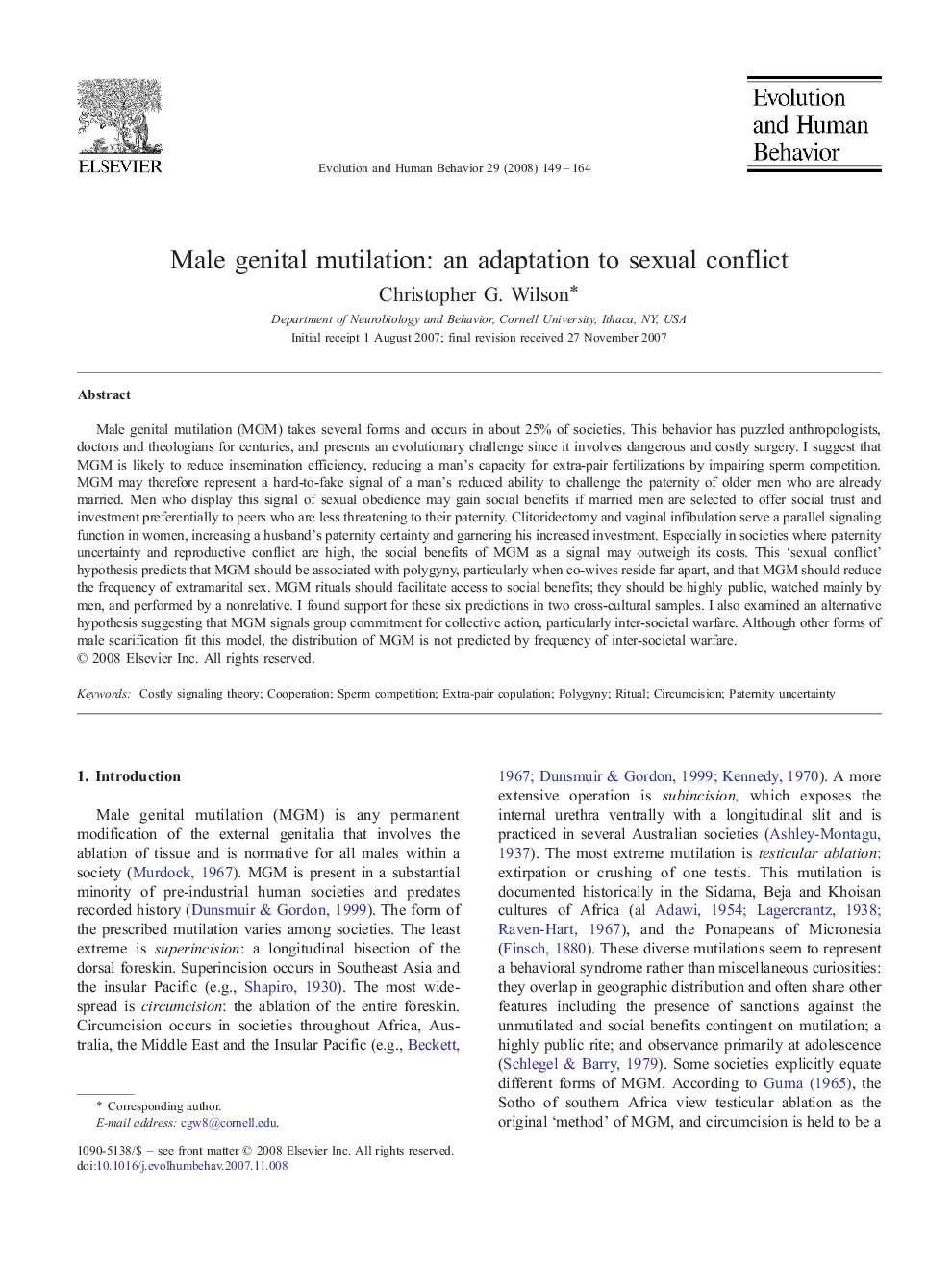| کد مقاله | کد نشریه | سال انتشار | مقاله انگلیسی | نسخه تمام متن |
|---|---|---|---|---|
| 943476 | 925474 | 2008 | 16 صفحه PDF | دانلود رایگان |

Male genital mutilation (MGM) takes several forms and occurs in about 25% of societies. This behavior has puzzled anthropologists, doctors and theologians for centuries, and presents an evolutionary challenge since it involves dangerous and costly surgery. I suggest that MGM is likely to reduce insemination efficiency, reducing a man's capacity for extra-pair fertilizations by impairing sperm competition. MGM may therefore represent a hard-to-fake signal of a man's reduced ability to challenge the paternity of older men who are already married. Men who display this signal of sexual obedience may gain social benefits if married men are selected to offer social trust and investment preferentially to peers who are less threatening to their paternity. Clitoridectomy and vaginal infibulation serve a parallel signaling function in women, increasing a husband's paternity certainty and garnering his increased investment. Especially in societies where paternity uncertainty and reproductive conflict are high, the social benefits of MGM as a signal may outweigh its costs. This ‘sexual conflict’ hypothesis predicts that MGM should be associated with polygyny, particularly when co-wives reside far apart, and that MGM should reduce the frequency of extramarital sex. MGM rituals should facilitate access to social benefits; they should be highly public, watched mainly by men, and performed by a nonrelative. I found support for these six predictions in two cross-cultural samples. I also examined an alternative hypothesis suggesting that MGM signals group commitment for collective action, particularly inter-societal warfare. Although other forms of male scarification fit this model, the distribution of MGM is not predicted by frequency of inter-societal warfare.
Journal: Evolution and Human Behavior - Volume 29, Issue 3, May 2008, Pages 149–164